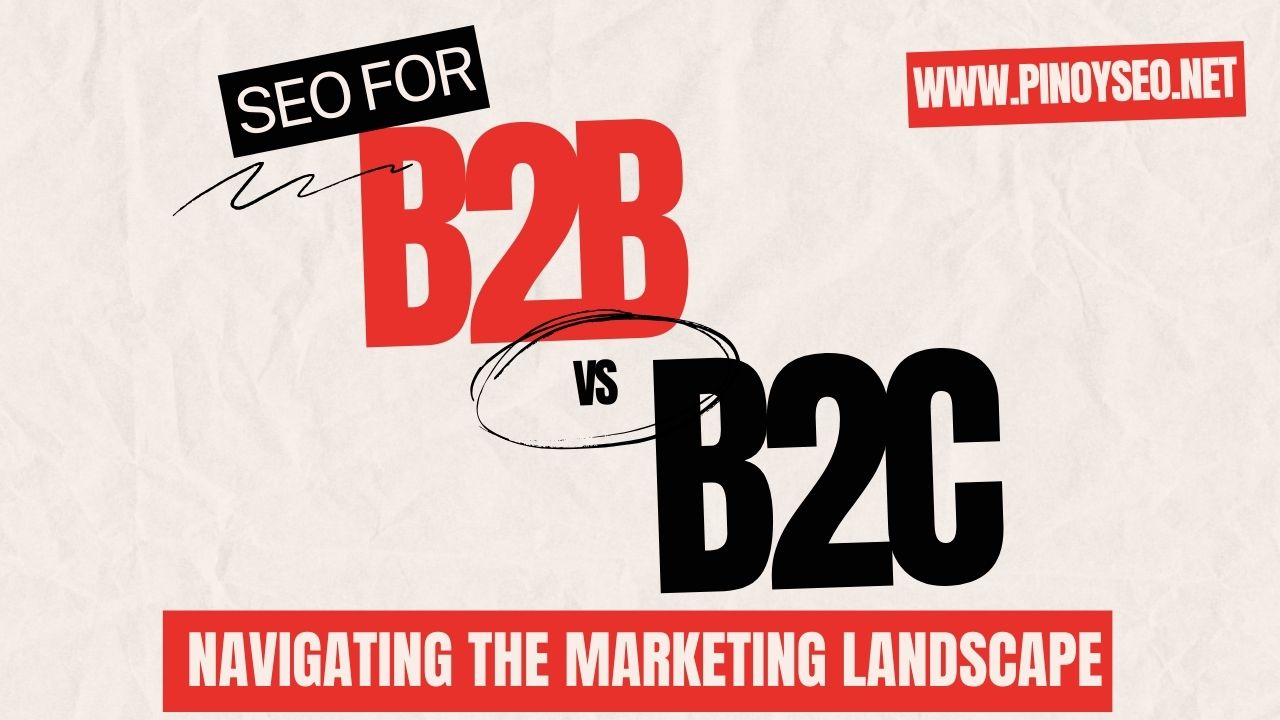In the vast ecosystem of digital marketing, search engine optimization (SEO) serves as a cornerstone for businesses aiming to enhance online visibility and drive organic traffic. However, the strategies employed in SEO vastly differ between business-to-business (B2B) and business-to-consumer (B2C) marketing realms. In this article, we’ll delve into the contrasting SEO tactics utilized in B2B and B2C marketing, exploring how the buyer’s journey, content strategies, and keyword targeting diverge in these distinct market segments.
Understanding the B2B and B2C Divide
B2B Marketing: B2B marketing involves selling products or services from one business to another. These transactions typically involve longer sales cycles, higher purchase values, and a focus on building relationships and trust with decision-makers.
B2C Marketing: On the other hand, B2C marketing targets individual consumers, aiming to capture their attention and prompt immediate purchases. B2C transactions often involve shorter sales cycles, lower purchase values, and a greater emphasis on emotional appeal and impulse buying.
Contrasting SEO Tactics
- Buyer’s Journey:
- B2B: In B2B marketing, the buyer’s journey is typically longer and more complex. Prospective buyers conduct extensive research, comparing different solutions and evaluating their options before making a purchase decision. SEO strategies focus on providing valuable content at each stage of the buyer’s journey, from awareness to consideration and decision-making.
- B2C: The B2C buyer’s journey is often shorter and more straightforward. Consumers may discover products or services through search engines and make quick purchasing decisions based on immediate needs or desires. B2C SEO tactics prioritize optimizing for high-intent keywords and providing seamless user experiences to facilitate conversions.
- Content Strategies:
- B2B: B2B content tends to be more educational and informative, addressing specific pain points and challenges faced by businesses. SEO strategies include creating in-depth guides, whitepapers, case studies, and thought leadership content to establish authority and build trust with B2B buyers.
- B2C: B2C content is often more visually engaging and emotionally resonant, aiming to evoke consumer emotions and drive impulse purchases. SEO tactics focus on optimizing product descriptions, customer reviews, blog posts, and visual content to capture attention and encourage conversions.
- Keyword Targeting:
- B2B: B2B SEO relies on targeting industry-specific keywords, long-tail phrases, and terms related to problem-solving and business solutions. Keywords often revolve around product features, benefits, and industry terms relevant to decision-makers and stakeholders.
- B2C: B2C SEO prioritizes targeting consumer-focused keywords, including product names, brand names, product categories, and terms related to benefits, discounts, and promotions. Emphasis is placed on optimizing for high-volume, high-conversion keywords that resonate with target consumer demographics.
Navigating the SEO landscape in B2B and B2C marketing requires a nuanced understanding of the unique dynamics and preferences of each market segment. While B2B SEO focuses on providing informative content throughout the buyer’s journey and targeting industry-specific keywords, B2C SEO emphasizes emotional appeal, visual engagement, and targeting consumer-focused keywords for immediate conversions. By tailoring SEO strategies to the distinct needs and behaviors of B2B and B2C audiences, businesses can optimize their online presence, drive traffic, and ultimately, achieve their marketing objectives in today’s competitive digital landscape.


